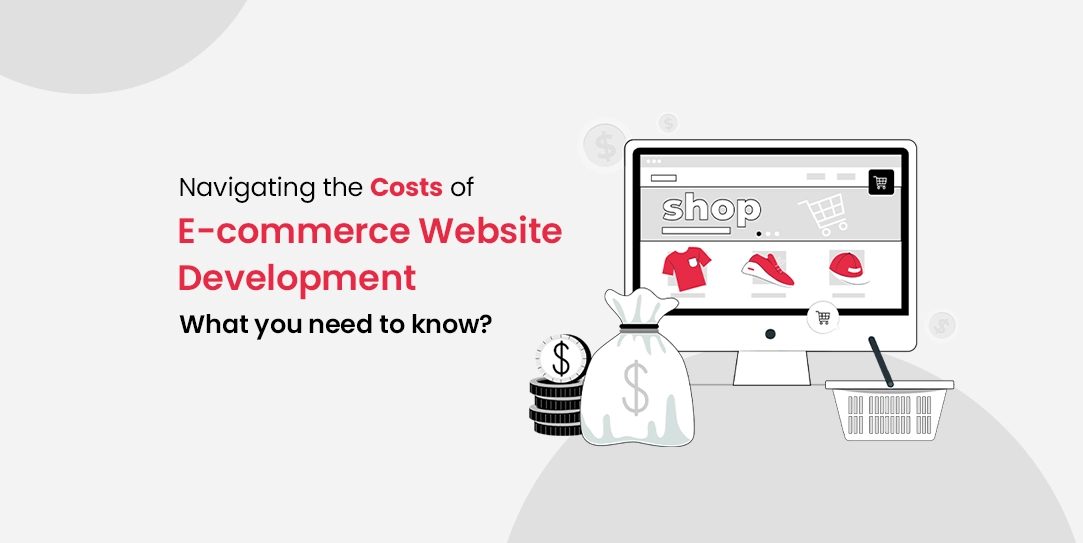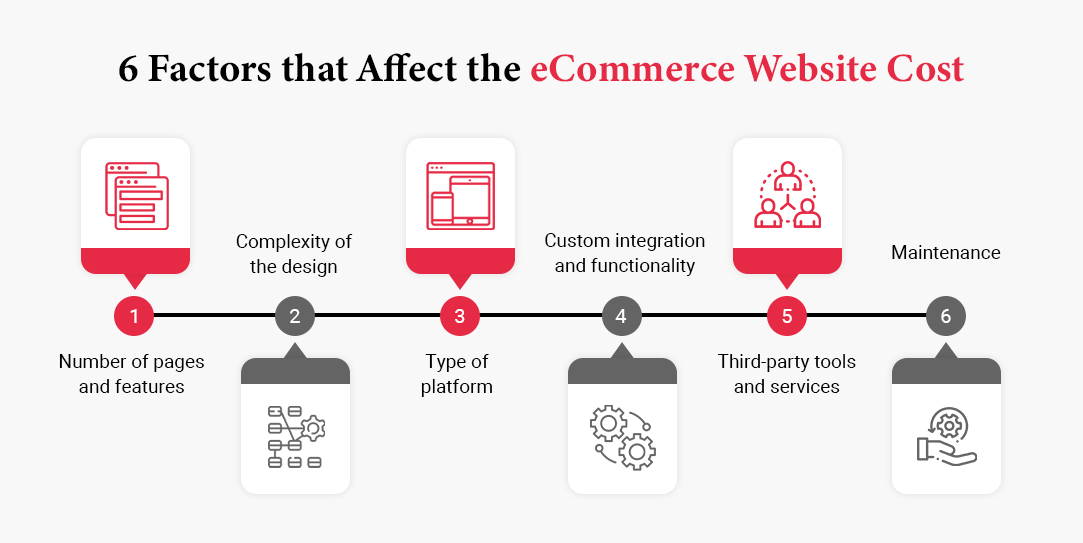Navigating the Costs of eCommerce Website Development

The cost of designing an eCommerce website can be high, but it is also a valuable investment that will pay off in the form of increased sales and better user experience.
Drupal is a flexible and powerful platform that can be tailored to meet the specific needs of an eCommerce website.
According to Insider Intelligence, retail eCommerce sales are expected to reach $6 trillion by 2026.
Several factors affect how much you should spend on designing your eCommerce site, including its size and complexity, the amount of customization you need, and the design and branding you want.
When you are planning to build an online store, it is important to consider the cost of working with an eCommerce Development Company. It is essential to have an understanding of how much you should expect to spend in order to have a successful website.
It is generally possible to design a small to a mid-sized eCommerce website for a few thousand dollars, while larger, more complex ones cost tens of thousands.
This article will let you know the ideal amount you need to spend on eCommerce website development.
Factors that determine the cost of designing an eCommerce Website Development
It is possible to design a small to a mid-sized eCommerce website for $1000, while more complex ones cost more than $100,000. Here are a few factors that determine the cost of the project:

1. Number of pages and features
The more pages and features in a website, the more expensive it will be to design. This is because each page in a website needs to be individually designed and developed, which takes time and effort.
As a result, eCommerce website cost can shoot up if the website must be complex with rich features. A website may be less expensive if it contains fewer pages and features, which can also mean it is less functional and user-friendly.
According to UJET, 73% of consumers will cut providers and subscriptions that offer the worst user experience.
Maintaining the right balaneCommercece of pages and features depends on the project’s specific needs and goals to offer a great user experience.
2. Complexity of the design
A simple eCommerce website with fewer products will typically be less expensive than a complex website with various products.
Advanced features like custom product filtration and recommendation can add to the complexity of the website design.
A complex and confusing design can make it harder for customers to navigate the site, which may result in them leaving the site and going elsewhere to buy the product.
A well-designed eCommerce site develops trust and credibility with customers.
Overall, strike a balance between the site’s complexity and ensure a rich and engaging user experience.
3. Type of platform
Platforms differ in terms of customization, ease of use, and ecommerce functionality, all of which contribute to the user experience and ultimately affect sales.
Some platforms offer pre built templates that can make building a website faster and less costly, while others require custom programming.
As well as impacting the efficiency and effectiveness of the ecommerce website management system, the platform can also affect its ability to integrate with other tools and systems, such as payment processors and inventory management systems.
The platform pricing can range from around $1 to more than $2,000 per month.
As well as impacting the efficiency of the eCommerce business, it can affect the ability to integrate with other tools and systems, such as payment processors and inventory management systems.
4. Custom integration and functionality
The cost of designing an eCommerce website can increase if custom functionality and integration with other systems are required.
Custom functionality makes the website stand out from other eCommerce sites with unique features and capabilities.
This can include a personalized recommendation, a one-click checkout option, etc.
The integration allows the website to connect and work seamlessly with other tools and platforms like payment gateways, marketing automation tools, etc.
Even though developing custom solutions and integrating them with existing systems can be time-consuming, it can lead to greater customer satisfaction.
5. Third-party tools and services
Tools and services like hosting, payment gateways, and security are essential to sustain the eCommerce website.
According to GoDaddy, purchasing a domain name can cost anywhere between $2 to $20 per year.
The hosting costs of Bluehost can range from $2.95 to more than $749 per month.
An SSL certificate encrypts data transmitted over the internet, verifies a website’s identity, and can range in price from $0 to over $70 per year.
Marketing and advertising efforts can be boosted by third-party services that offer targeted advertising options and analysis tools.
Ultimately, this can streamline the creation and operation of an eCommerce website, increasing its sales and customer satisfaction.
6. Maintenance
Maintenance regularly checks and updates the website to ensure it runs smoothly and efficiently.
Proper maintenance can prevent many problems, such as security breaches, website crashes, and slow loading times, which can frustrate customers and cause eCommerce businesses to lose money.
Moreover, maintenance can help identify and resolve potential issues before they become serious, saving time and money in the long run.
Overall, eCommerce website development cost can vary widely depending on the specific requirements types and overall complexities of the project.
It is best to discuss your specific needs with an eCommerce web design professional to get a more accurate cost estimate.
LN Webworks, a Drupal eCommerce Development Company, can help you analyze the factors determining your eCommerce website’s cost.
How to reduce the cost of eCommerce Development?
1. Content management system
CMS like WordPress, Shopify, Magento, etc., can provide free or low-cost tools and plugins to build an eCommerce website.
But Drupal can be integrated with eCommerce easily which gives a vast set of features using different plugins and frameworks to support it.
2. Third-party tools and services
Choose third-party tools and services that offer competitive pricing and have good reviews for their quality.
Tools like Paypal or Stripe can reduce the cost of setting up and receiving payments effortlessly.
3. Outsourcing
Outsourcing allows you to tap into a global pool of talent which can help you find experienced developers at a lower cost than hiring in-house.
You can avoid the cost of recruiting, training, and managing in-house developers.
Conclusion
The cost of designing an eCommerce website can vary greatly depending on several factors.
Planning your eCommerce website features and services and seeking practical solutions to reduce costs while providing a good user experience is essential.
Ultimately, the best approach is to work with the best web design professional or eCommerce Development Company to determine a budget that fits your needs and goals.
As a Drupal web development company, LN Webworks delivers customized, flexible, and client-focused Drupal eCommerce website development services that meet online retailers’ and customers’ needs and expectations.
You can increase revenue through Drupal consulting from our top Drupal development experts by building an online store that’s highly accessible, scalable, and engaging.
Get in touch with us if you plan on developing an eCommerce website.

